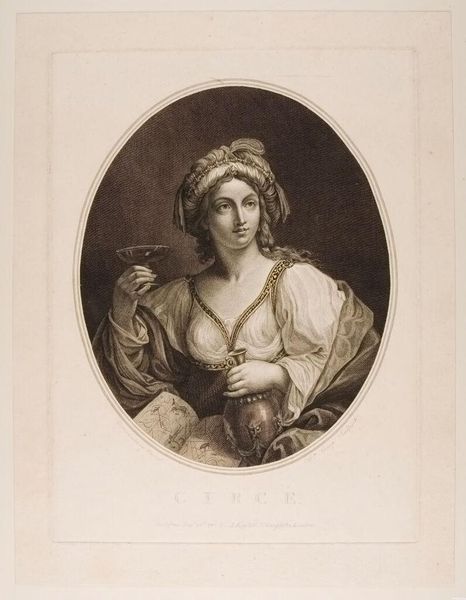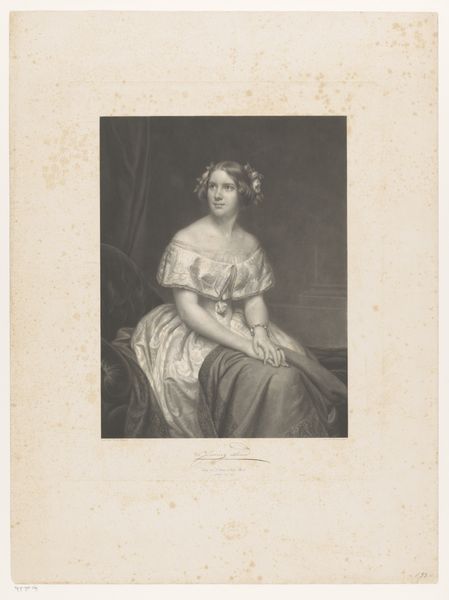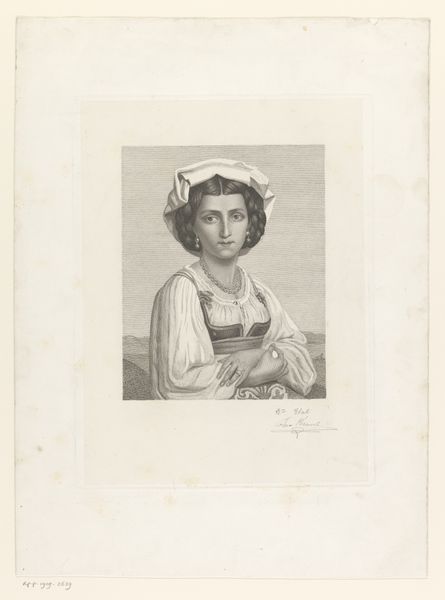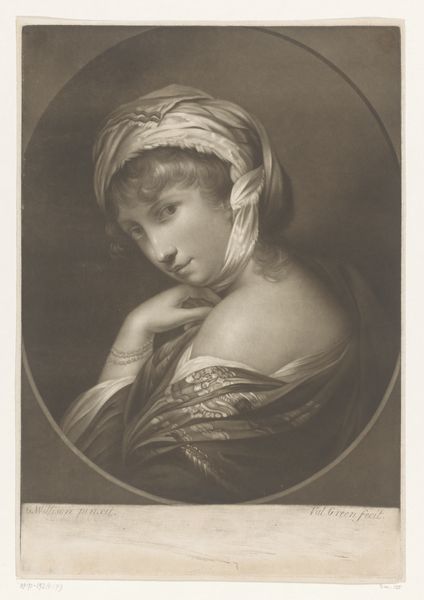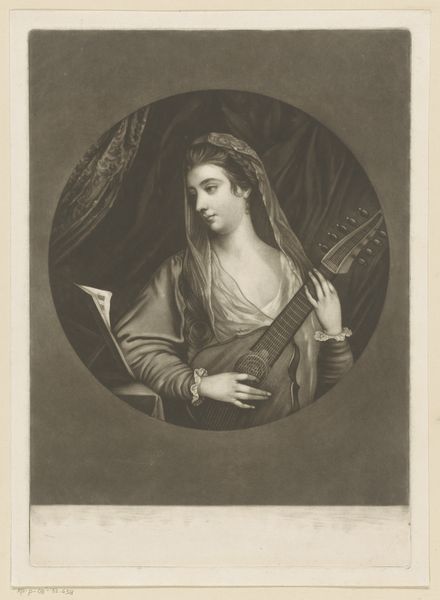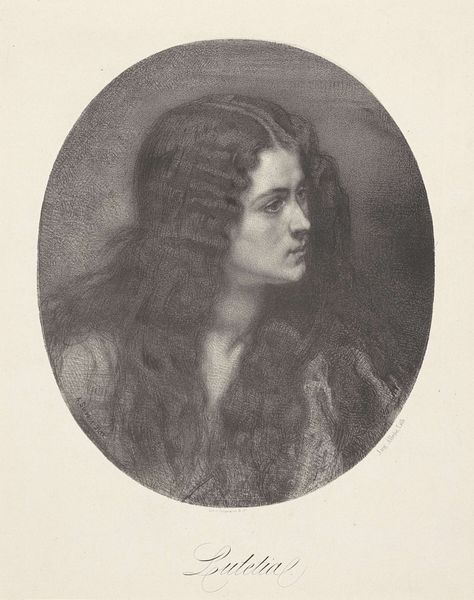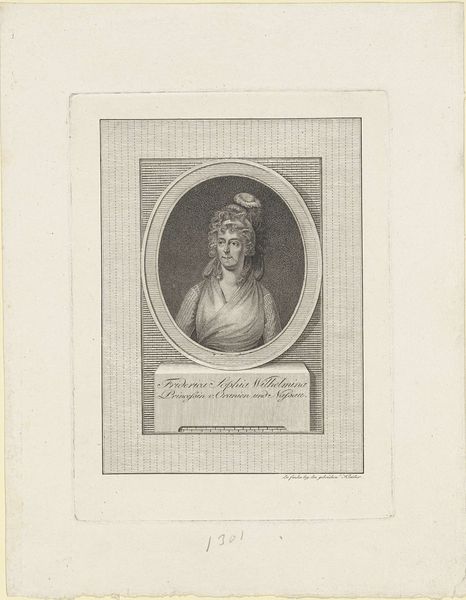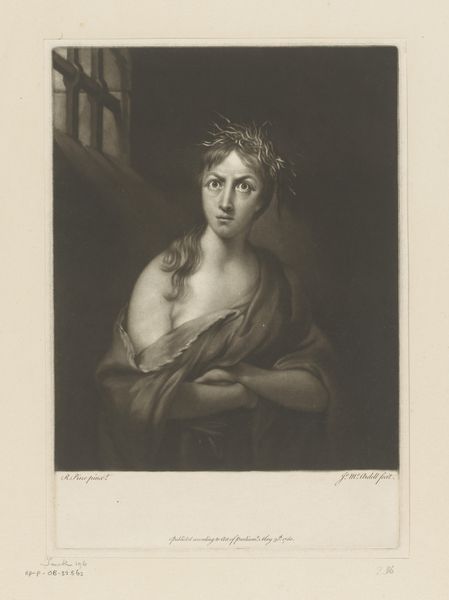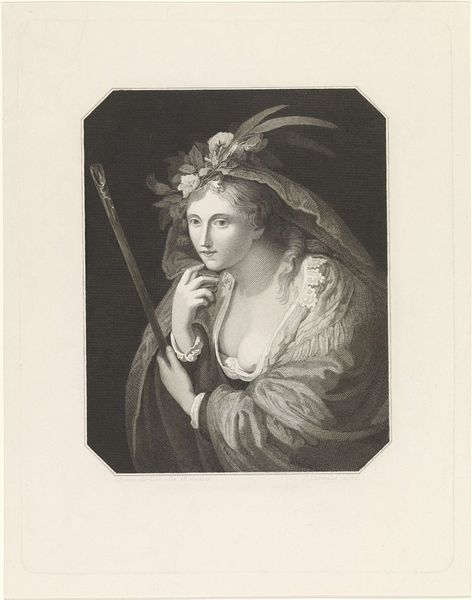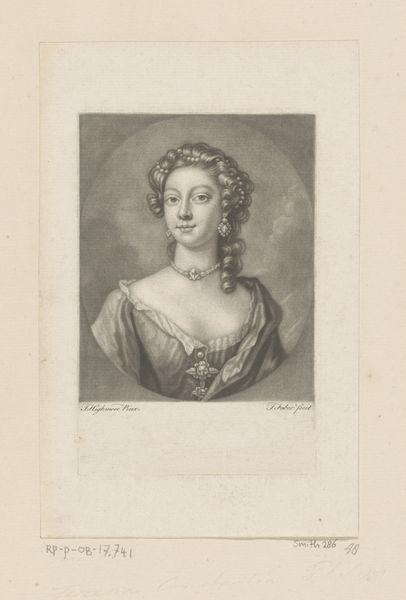
engraving
#
portrait
#
pencil drawn
#
charcoal drawing
#
figuration
#
portrait reference
#
pencil drawing
#
romanticism
#
engraving
Dimensions: height 390 mm, width 285 mm
Copyright: Rijks Museum: Open Domain
Curator: The engraving we're looking at, "Portrait of a Young Woman with a Headband" by Lambertus Antonius Claessens, dates back to the Romantic era, circa 1829 to 1834. I'm immediately drawn to the technique; the artist has used engraving to mimic the softness of a chalk drawing. What are your initial impressions? Editor: Well, beyond the artistic skills evident, I'm captivated by the subject's gaze. There's a wistful, almost melancholic air about her. It evokes the romantic sensibility, definitely, and makes me wonder about the role of women in that period. Was she constrained, dreaming of something more? Curator: Let’s think about how prints circulated then, specifically engravings. Consider the labor and distribution networks necessary. Each line was painstakingly etched into the plate, think of the time! Engravings like this allowed for the wider distribution of images, impacting how beauty standards and societal ideals were circulated and consumed. Editor: Exactly. And the image itself feels carefully constructed to convey a certain ideal. Her headband, the delicate draping of her clothing – these elements create an image of refined elegance and perhaps also reinforce notions of female virtue. I'd love to research her access to these materials for dress! Also, to really unpack this representation, we might question who this image was marketed to, and the values it was intended to uphold. Curator: Considering it circulated widely and copied drawing styles, maybe it impacted notions of accessibility in art education, allowing amateur artists a view into the then-contemporary styles... What affordable artworks impacted how one was made at that time? Was that image even attainable for most? What were their drawing processes compared to what we see reflected in art instruction today? Editor: That's an intriguing thought—tying it to art education. But to circle back, the romantic idealism juxtaposed with the societal realities for many women, particularly regarding class and race, adds a poignant layer. Her beauty ideal speaks volumes about that era. This makes me wish we could know this woman’s name, or even have more about her class… Curator: Ultimately, thinking through her materials as well, one might start thinking through not just who *she* was, but rather, who this picture was for—and in effect what processes enabled *her* image to begin circulating the art world for those with less access to materials or subjects… Editor: Absolutely. And exploring those connections is what makes engaging with historical art so enriching—the way these works become launchpads for broader social and historical inquiries.
Comments
No comments
Be the first to comment and join the conversation on the ultimate creative platform.
